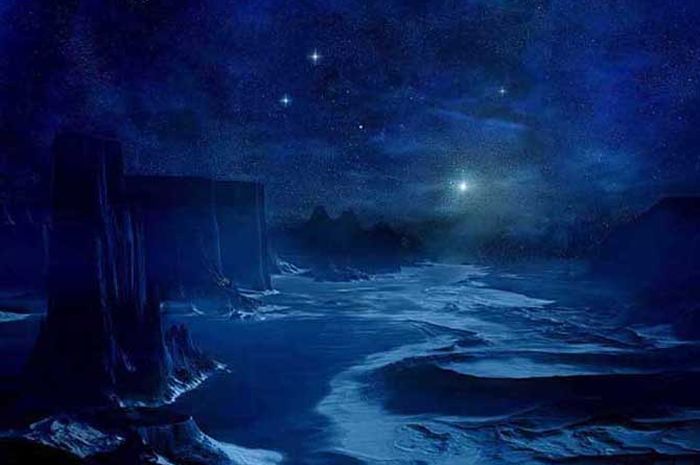–
The Late Ordovician mass extinction (LOME) was the second largest mass extinction in the history of the earth
–
Nationalgeographic.co.id—The mass extinction that the dinosaurs experienced was not the only extinction that occurred in the world the history of the earth. There are at least five of the most significant known mass extinctions known as ‘big five‘. A mass extinction is an event when at least three-quarters of all species on Earth face extinction during a certain geological time period.
With the current trend of global warming and climate change, many researchers now believe that we may be in sixth place. Finding the root cause of Earth’s mass extinction has long been a hot topic for scientists. Because understanding the environmental conditions that led to the loss of most species in the past has the potential to help prevent similar events from happening in the future.
Now, a new study from an international team of scientists seeks to investigate the second largest mass extinction event in the history of the earth which are called the Late Ordovician mass extinction (LOME) or Extinction of the Ordovisium-Silur. The extinction was the first of a mass extinction’big five‘ occurred 445 million years ago and was marked by the loss of 85 percent of marine species.
Next page…
A team of scientists from the United States, Canada, China, Mexico and France led by Syracuse University’s Department of Earth and Environmental Sciences has investigated the marine environment before, during, and after the extinction of the Ordovisium end. The goal is to determine how the event occurred and was triggered. The results of the study have been published in the journal Nature Geoscience.
To paint a picture of marine ecosystems during the Ordovician Period, mass extinction expert Seth Finnegan, professor at UC Berkeley, said the ocean was full of biodiversity. The oceans contain some of the first reefs made by animals, but not many vertebrates.
“If you go snorkelling in the Ordovician seas, you’ll see some familiar groups like clams and snails and sponges, but also a lot of other groups that are now greatly reduced in diversity or completely extinct like trilobites, brachiopods and crinoids,” says Finnegan. in a Syracuse University release.

Fritz Geller-Grimm / National Museum of Natural History
–
Ordovisium marine life.
–
Unlike rapid mass extinctions, such as the Cretaceous-Tertiary extinction event in which dinosaurs and other species died suddenly about 65.5 million years ago, Finnegan said LOME occurred over a substantial period of time, with estimates of between less than half a million to nearly two million years.
One of the main debates surrounding LOME is whether the lack of oxygen in seawater caused the mass extinction of this period. To investigate this question, the team integrated geochemical testing with numerical simulations and computer modeling.
The researchers measured the concentration of iodine in carbonate rocks from that period. The concentration of this element in carbonate rocks serves as an indicator of changes in deep ocean oxygen levels the history of the Earth.
Next page…
The new data, combined with computer modeling simulations, show that there is no evidence of amplified anoxia or oxygen deprivation during the extinction event in the shallow marine animal habitats where most organisms live. That means that the climatic cooling that occurred during the end of the Ordovician Period combined with additional factors may have been responsible for the extinction event.
“On the other hand, there is evidence that anoxia in the deep ocean developed over the same time, a mystery that classical models of ocean oxygen cannot explain,” said Dr. Alexandre Pohl, a researcher in the Department of Earth and Planets. Science at the University of California, Riverside.
Pohl said oxygenation of the upper ocean in response to cooling had been anticipated, as atmospheric oxygen was more soluble in cold water. “However, we were surprised to see the expansion of anoxia in the lower ocean due to deep anoxia the history of the Earth generally associated with global warming caused by volcanism, “he explained.

André Desrochers, University of Ottawa
–
Fossils from the Ordovician period
–
The authors attribute deep sea anoxia to the circulation of ocean water through the global oceans. “The important thing to remember is that ocean circulation is a very important component of the climate system,” Pohl said.
The team’s computer modeling results suggest that climate cooling is likely changing ocean circulation patterns, stopping the flow of oxygen-rich water from shallow to deeper oceans.
Cause of occurrence the extinction of the Ordovisium the end is not yet fully agreed. Researchers are also currently ruling out the reason for changes in oxygenation as the sole explanation for this extinction and adding new data to support temperature changes as a mechanism for this mass extinction.
But, according to the researchers, acknowledging that climate cooling could also lead to lower oxygen levels in some parts of the ocean was a key part of their research.

André Desrochers, University of Ottawa
–
Detail of Ordovician Period fossils on Anticosti Island.
–
“For decades, the prevailing school of thought in our field has been that global warming causes the oceans to lose oxygen and thus impacts the habitability of the oceans, potentially destabilizing entire ecosystems,” the researchers said. “In recent years, more and more evidence points to multiple episodes in the history of the Earth when oxygen levels also drop in cold climates.”
The researchers hope that, when better climate data and more sophisticated numerical models become available, they will be able to offer a more robust representation of the factors that likely led to the Late Ordovician mass extinction.
PROMOTED CONTENT
Featured Videos
– .


